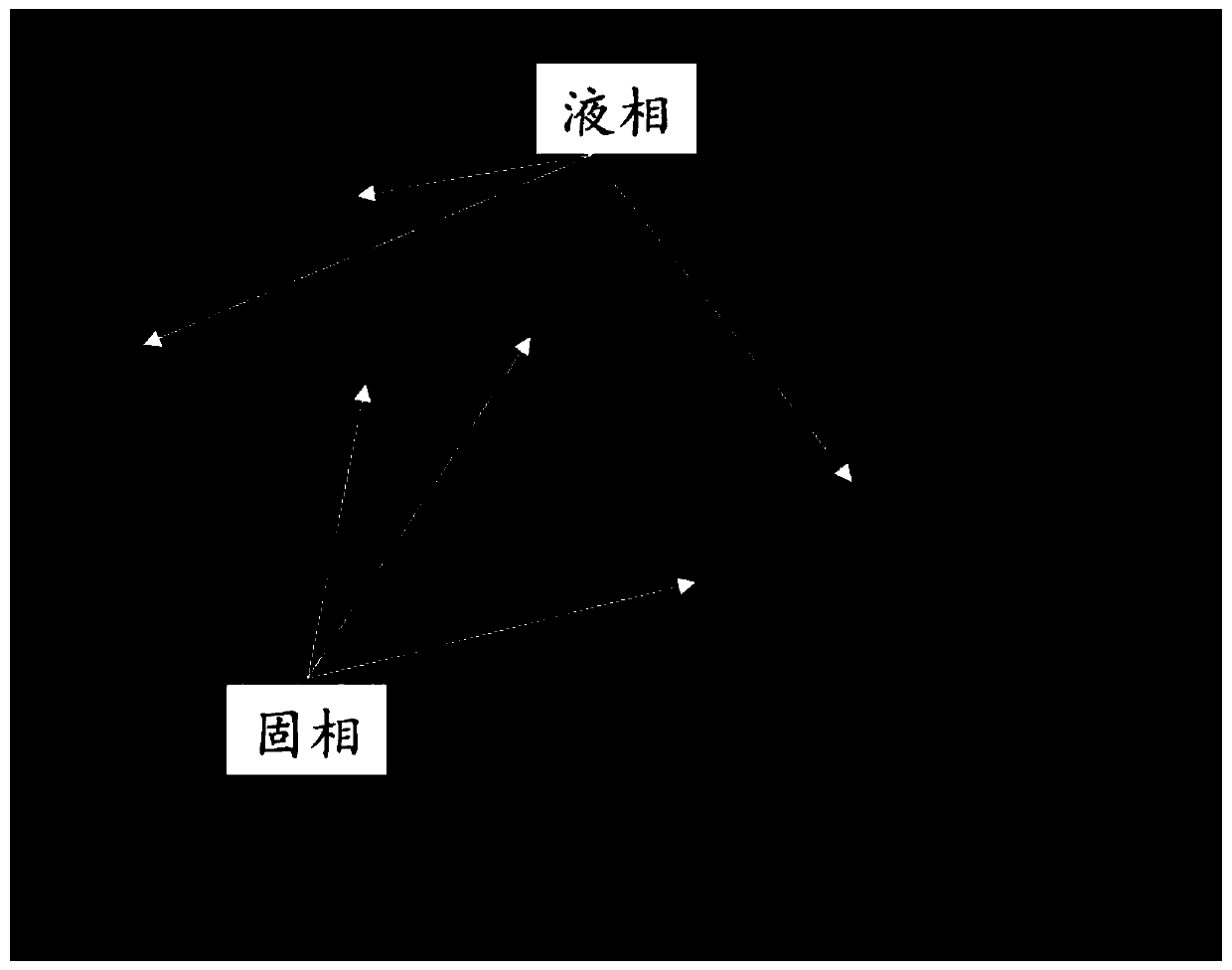A method for preparing ferronickel by strengthening the direct reduction process of laterite nickel ore
A laterite nickel ore and direct technology, applied in the field of metallurgy, can solve problems such as the difficulty of separating ferronickel and tailings, and achieve the effects of promoting aggregation growth, strengthening separation, and improving mass transfer process
- Summary
- Abstract
- Description
- Claims
- Application Information
AI Technical Summary
Problems solved by technology
Method used
Image
Examples
Embodiment 1
[0033] The laterite nickel ore powder is fully mixed with a certain quality of flux and reducing agent, and the agglomeration is dried. Among them, the flux is quicklime, and the amount of calcium oxide is 10% of the mass of laterite nickel ore; the reducing agent is lignite, and the reducing agent The mass ratio of medium fixed carbon to total iron in laterite nickel ore is 0.35. The agglomerates were calcined at 1200°C for 3 hours in a rotary kiln to obtain reduced products. It is measured that the mass ratio of the liquid phase to the material during the roasting process is about 23%. After water quenching, the reduction product is crushed and ground until 90% of it is smaller than 74 μm, and then separated by magnetic separation. The grades of nickel and iron in the obtained ferronickel product are 7.1% and 82.3% respectively, and the recovery rates of nickel and iron are 82.3% and 81.9% respectively. Compared with the comparative example, the grades and recovery rates o...
Embodiment 2
[0035]Fully mix the laterite nickel ore powder with a certain mass of flux and reducing agent, and dry the agglomerates, wherein the flux is quicklime, and the amount of calcium oxide added is 15% of the mass of laterite nickel ore; the reducing agent is lignite, and the reducing agent The mass ratio of medium fixed carbon to total iron in laterite nickel ore is 0.35. The agglomerates were calcined at 1200°C for 3 hours in a rotary kiln to obtain reduced products. It is measured that the mass ratio of the liquid phase to the material during the roasting process is about 28%. After water quenching, the reduction product is crushed and ground until 90% of it is smaller than 74 μm, and then separated by magnetic separation. The grades of nickel and iron in the obtained ferronickel product are 7.6% and 85.2% respectively, and the recovery rates of nickel and iron are 85.3% and 87.1% respectively. Compared with the comparative example, the grades and recovery rates of nickel and ...
Embodiment 3
[0037] Fully mix the laterite nickel ore powder with a certain mass of flux and reducing agent, and dry the agglomerates, wherein the flux is quicklime, and the amount of calcium oxide added is 15% of the mass of laterite nickel ore; the reducing agent is lignite, and the reducing agent The mass ratio of medium fixed carbon to total iron in laterite nickel ore is 0.35. The agglomerate was calcined at 1250°C for 3 hours in a rotary kiln to obtain a reduced product. It is measured that the mass ratio of the liquid phase to the material during the roasting process is about 35%. After water quenching, the reduction product is crushed and ground until 90% of it is smaller than 74 μm, and then separated by magnetic separation. The grades of nickel and iron in the obtained ferronickel product are 8.0% and 87.8% respectively, and the recovery rates of nickel and iron are 88.2% and 89.0% respectively. Compared with the comparative example, the grades and recovery rates of nickel and ...
PUM
 Login to View More
Login to View More Abstract
Description
Claims
Application Information
 Login to View More
Login to View More - R&D
- Intellectual Property
- Life Sciences
- Materials
- Tech Scout
- Unparalleled Data Quality
- Higher Quality Content
- 60% Fewer Hallucinations
Browse by: Latest US Patents, China's latest patents, Technical Efficacy Thesaurus, Application Domain, Technology Topic, Popular Technical Reports.
© 2025 PatSnap. All rights reserved.Legal|Privacy policy|Modern Slavery Act Transparency Statement|Sitemap|About US| Contact US: help@patsnap.com


